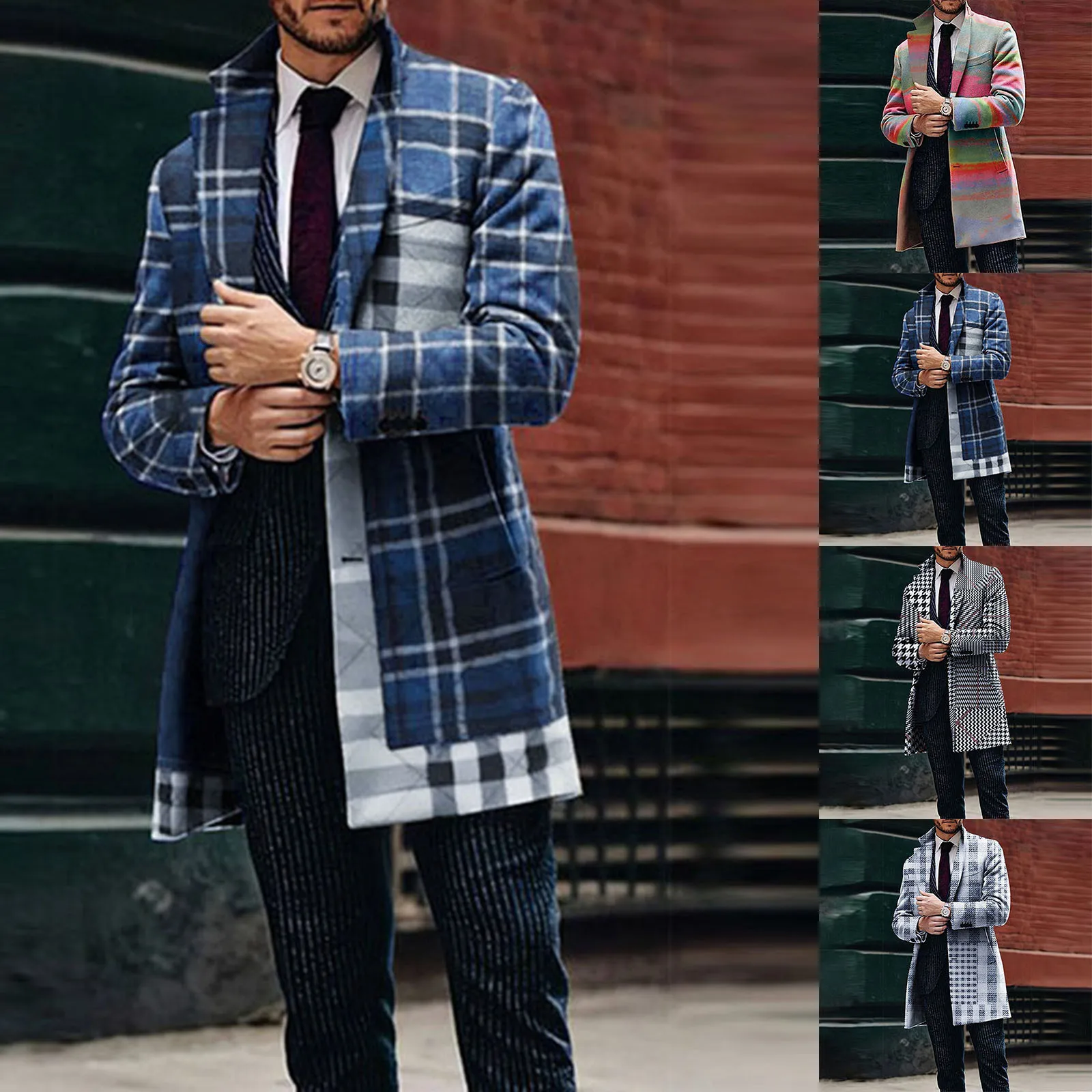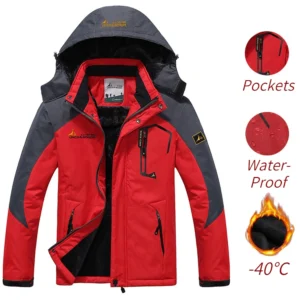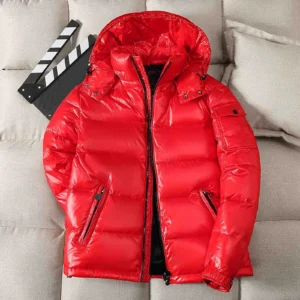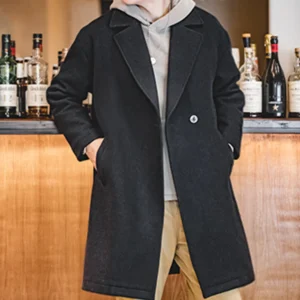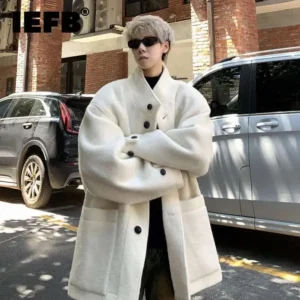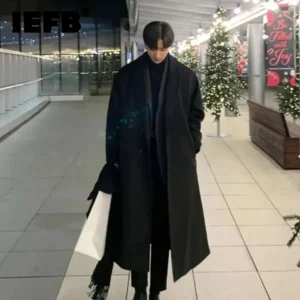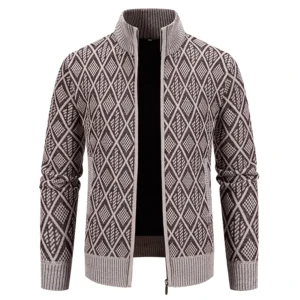Introduction: Why Insulated Wool Overcoats Remain Essential in a Modern Wardrobe
In a world of rapidly changing fashion trends, the insulated wool overcoat stands as a testament to enduring style and practical functionality. Unlike standard wool overcoats, insulated versions incorporate additional thermal layers specifically designed to enhance warmth without compromising on sophistication. This perfect marriage of form and function is what has kept wool overcoats relevant for generations.
What sets insulated wool overcoats apart is their remarkable versatility and long-term value. When you invest in a quality wool overcoat, you’re not just purchasing winter wear—you’re acquiring a cornerstone piece that can elevate your wardrobe for years, even decades to come. The benefits are numerous:
- Natural temperature regulation that wool provides, maintaining comfort across varying conditions
- Classic silhouettes that transcend seasonal fashion trends
- Exceptional durability that improves the cost-per-wear value over time
- Unmatched elegance that enhances both casual and formal attire
Wool’s natural properties make it particularly well-suited for winter wear. Studies show wool provides up to 30% better insulation than synthetic alternatives, while also wicking moisture away from the body. This comprehensive guide will walk you through everything you need to know about selecting, styling, and caring for an insulated wool overcoat, ensuring your choice of coat length complements both your body type and lifestyle needs.
Whether you’re considering your first investment piece or looking to expand your collection of wool overcoats, understanding these fundamental aspects will help you make informed decisions that balance style, warmth, and value.
Understanding Wool Quality in Premium Overcoats
The foundation of any exceptional overcoat begins with its wool quality. Not all wool is created equal, and understanding the differences can significantly impact your coat’s performance, feel, and longevity.
Types of Wool and Their Properties
Merino Wool: Derived from Merino sheep, this fine wool offers exceptional softness and insulation. With fibers as fine as 15-24 microns, Merino provides luxurious comfort while maintaining excellent heat retention.
Melton Wool: Dense and heavy, Melton wool undergoes extensive fulling (a process of shrinking and thickening). Its tight weave makes it wind-resistant and exceptionally durable, ideal for severe weather conditions.
Lambswool: Harvested from a sheep’s first shearing, lambswool offers softness comparable to cashmere but with greater resilience. Its natural crimp creates air pockets that enhance insulation.
Cashmere Blends: While pure cashmere overcoats are luxurious, wool-cashmere blends (typically 80% wool, 20% cashmere) offer an excellent compromise of softness, warmth, and improved durability.
Understanding Wool Weight and Content
Wool weight, measured in grams per square meter (g/m²) or ounces, directly correlates with warmth and durability. For insulated overcoats:
– Lightweight: 350-450 g/m² (suitable for mild winters)
– Medium weight: 450-600 g/m² (versatile for most winter conditions)
– Heavyweight: 600+ g/m² (designed for extreme cold)
The ideal percentage of wool content depends on your specific needs. While 100% wool coats offer superior insulation and natural properties, strategic blends can enhance performance. For example, adding 10-20% nylon can improve durability without significantly compromising warmth. Understanding whether 100% wool coats are best for winter helps you make decisions aligned with your specific climate needs.
Wool Finishes and Textures
The finish of wool dramatically affects both appearance and functionality:
– Brushed finish: Creates a soft, fuzzy surface that traps additional air for warmth
– Pressed finish: Provides a smoother, more formal appearance with moderate insulation
– Boiled wool: Offers exceptional density and warmth through controlled shrinking
Common wool patterns like herringbone, twill, and houndstooth aren’t merely decorative—each weave structure affects the coat’s insulation properties and durability in different ways. For instance, twill weaves typically offer better wind resistance than plain weaves, while maintaining flexibility.
Insulation Methods: What Makes These Overcoats Exceptionally Warm
What transforms a standard wool overcoat into an insulated masterpiece is the strategic addition of thermal layers. Modern insulation technology has evolved to offer remarkable warmth without the bulk traditionally associated with winter wear.
Types of Insulation in Premium Overcoats
Synthetic Insulation
* Thinsulate™: Developed by 3M, this microfiber insulation traps body heat while allowing moisture to escape. At 1.5 times warmer than down for the same thickness, it maintains warmth even when damp.
* PrimaLoft®: Originally developed for the U.S. Army, PrimaLoft offers down-like softness with superior water resistance. Its fine fibers create millions of air pockets for excellent thermal efficiency.
* Thermolite®: Engineered with hollow-core fibers, Thermolite provides exceptional lightweight warmth and moisture management.
Natural Insulation Options
* Down: With the highest warmth-to-weight ratio of any insulation, down creates unparalleled heat retention but requires protection from moisture.
* Wool Batting: Some premium overcoats use wool itself as insulation, creating a seamless natural barrier against cold.
Innovative Construction Methods
* Double-Layered Wool: Two layers of wool fabric with air space between them create natural insulation without additional materials.
* Quilted Linings: Diamond or channel quilting patterns hold insulation in place while adding minimal bulk.
* Windproof Membranes: Ultrathin technical layers block wind while maintaining breathability.
The effectiveness of insulation is measured by its warmth-to-weight ratio. Quality insulated coats achieve an optimal balance where maximum warmth is provided with minimal impact on the garment’s drape and mobility. For instance, 60g Thinsulate insulation can increase a coat’s temperature rating by approximately 15-20°F without noticeable bulk.
Understanding these insulation methods helps you select an overcoat that meets your specific climate needs while maintaining the refined aesthetic that makes wool overcoats timeless wardrobe investments.
Classic Overcoat Styles and Their Insulation Potential
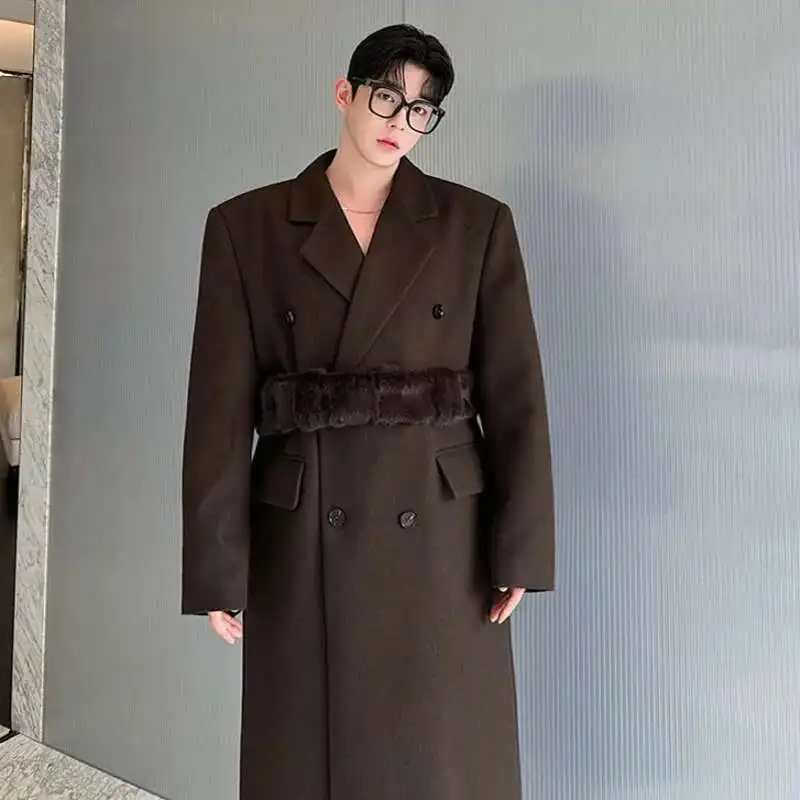
The style of an overcoat isn’t merely about aesthetics—it directly impacts its insulation efficiency. Different designs offer varying levels of coverage and layering potential, making some naturally better suited for extreme cold.
Single-Breasted Overcoats
The single-breasted overcoat represents versatility and understated elegance. With a clean front featuring 3-5 buttons, this style provides a streamlined silhouette that works effortlessly in professional environments. While offering moderate chest coverage, single-breasted designs excel with:
- Enhanced mobility and ease of movement
- Versatile layering potential over suits and casual wear
- Modern, sleek appearance that flatters most body types
From an insulation perspective, single-breasted coats typically accommodate medium-weight insulation without compromising their clean lines. They perform best in moderate winter conditions or urban environments where you move between heated buildings and outdoor spaces.
Double-Breasted Overcoats
The double-breasted overcoat delivers superior warmth through additional fabric across the chest and torso. With overlapping front panels secured by 6-8 buttons, these double-breasted overcoats provide exceptional protection against biting winds. Their advantages include:
- Significantly increased chest and torso insulation
- Classic, authoritative appearance with timeless appeal
- Superior cold-weather performance, especially in windy conditions
The overlapping construction creates an additional thermal barrier, making double-breasted styles naturally warmer even before adding insulation. They excel in colder climates and formal settings where protection against harsh elements is essential.
Chesterfield Overcoats
The Chesterfield represents traditional business elegance with its straight cut and velvet collar. This style typically features:
- Single-breasted or double-breasted front options
- Clean lines without a belt or cinching
- Often includes a concealed placket for additional wind protection
The Chesterfield’s formal design accommodates medium to heavy insulation, particularly in the longer versions that provide additional leg coverage. These coats shine in professional settings where warmth must be balanced with refined appearance.
Polo Coats
Originally derived from sportswear, the polo coat combines warmth with casual sophistication through:
- Belted waist for adjustable fit and wind protection
- Wrap-around design providing excellent lower body coverage
- Patch pockets and turnback cuffs with functional details
The wrap design of polo coats creates natural double-layering across the front, making them excellent candidates for insulation. The adjustable belt allows for comfortable wearing over multiple layers, making them versatile for fluctuating temperatures.
Duffle Coats
With their distinctive toggle closures and hood, duffle coats offer exceptional cold-weather protection:
- Generous cut allowing for substantial insulation
- Hood providing critical head and neck protection
- Toggle closures that work easily even with gloves
Though more casual than other styles, insulated duffle coats excel in extreme weather conditions where function takes priority over formality. Their roomy design accommodates the heaviest insulation options without restricting movement.
Each style balances warmth potential with aesthetic considerations, allowing you to select an overcoat that meets both your climate requirements and style preferences.
Finding the Perfect Fit: Accommodating Layers Without Bulk
Proper fit is crucial for an insulated wool overcoat—too tight, and you’ll restrict movement and layering potential; too loose, and you’ll lose heat and appear disheveled. Insulated overcoats require specific fitting considerations beyond standard outerwear.
Key Measurement Points
Shoulders: The overcoat’s shoulder seams should extend slightly beyond your natural shoulder to accommodate suits or sweaters underneath. About ½ inch of extension provides ideal layering room without appearing oversized.
Chest: When buttoned, you should be able to comfortably fit a closed fist between your chest and the coat. This ensures adequate room for layering while maintaining a clean silhouette.
Sleeve Length: Proper coat length includes sleeves that cover your suit jacket completely while allowing ¼ to ½ inch of shirt cuff to remain visible.
Overall Length: Traditional overcoats extend to just above the knee, providing optimal leg protection without restricting movement. Contemporary styles might fall to mid-thigh, sacrificing some warmth for a modern appearance.
Fit Checklist for Insulated Overcoats
When trying on an insulated wool overcoat, ensure:
– You can cross your arms comfortably without pulling across the back
– The coat closes easily without straining buttons or creating horizontal wrinkles
– You can raise your arms forward without excessive lifting of the coat’s body
– The collar sits flush against your neck when turned up for wind protection
– The sleeves allow enough room for a watch or bracelet without binding
– You can comfortably wear your typical winter layers underneath
Accommodating Layers
The key to balancing warmth with elegance is strategic sizing. Rather than simply buying oversized, look for coats specifically designed with layering in mind. These typically feature:
- Slightly broader shoulders and chest compared to suit jackets
- Armholes positioned to allow freedom of movement
- Gently tapered waist that provides shape without constriction
When trying on overcoats, wear similar layers to what you’ll typically use—ideally a suit jacket or heavy sweater—to ensure accurate fit assessment.
Remember that minor tailoring adjustments can transform an adequate fit into a perfect one. Sleeve length and waist suppression can often be modified by a skilled tailor, while shoulder fit cannot be easily altered.
Essential Construction Details That Enhance Warmth
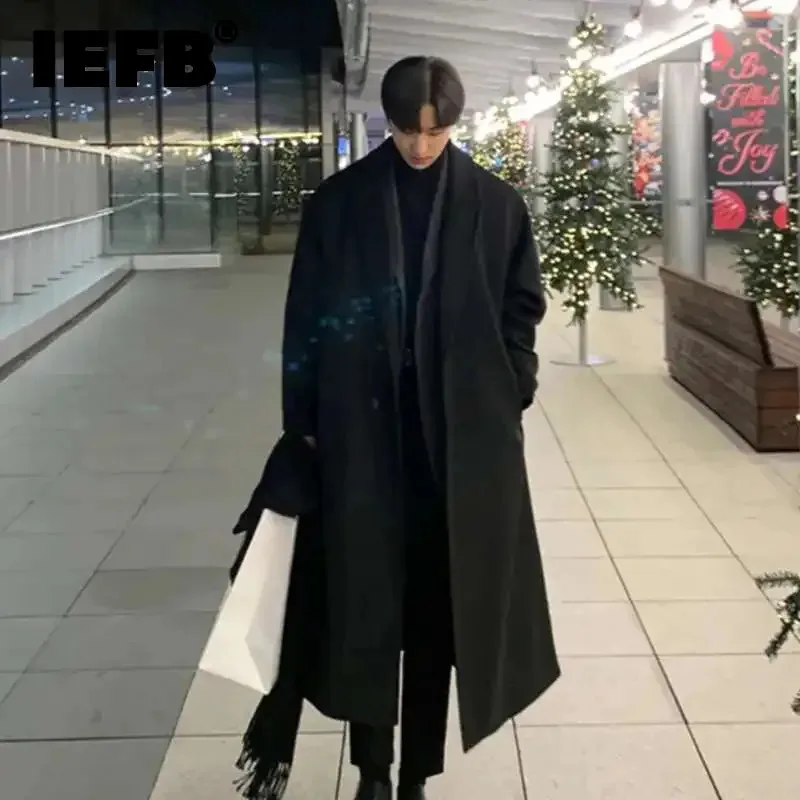
The difference between a merely adequate and an exceptional insulated wool overcoat often lies in construction details that might escape casual observation. These design elements significantly enhance thermal efficiency while contributing to the coat’s overall aesthetic and functionality.
Collar Construction
A well-designed collar serves as critical defense against wind and cold:
Convertible Collar: Typically folding flat in mild conditions but capable of standing upright for neck protection in extreme cold. The best designs include a hidden button or hook to secure the collar when raised.
Ulster Collar: Originally from military designs, this broader collar extends higher on the neck and features a throat latch that secures across the neck for maximum protection.
Notch vs. Peak Lapels: Peak lapels provide additional coverage when turned up against winter winds, while notch lapels offer a more conservative appearance with adequate protection.
Closure Systems
The front closure significantly impacts both warmth and aesthetics:
Button Quality: Horn buttons provide durability and elegance, while corozo (vegetable ivory) offers similar benefits with increased sustainability.
Hidden Plackets: A fabric panel beneath the button closure creates an additional wind barrier, preventing cold air infiltration through the front opening.
Storm Flaps: Extended fabric panels that fold over closure systems provide superior protection in harsh conditions, particularly valuable in long winter coats.
Strategic Pocket Designs
Thoughtfully designed pockets contribute to both warmth and functionality:
Handwarmer Pockets: Angled or straight exterior pockets lined with soft, warm materials provide practical hand protection and casual accessibility.
Internal Security Pockets: Zippered or buttoned interior pockets safeguard valuables while adding minimal bulk to the coat’s profile.
Ticket Pockets: These small additional exterior pockets above the main pockets offer convenient storage while honoring traditional tailoring details.
Wind Protection Features
Superior insulated overcoats incorporate specific details to eliminate cold air penetration:
Internal Windbreakers: Thin, technical fabric panels at critical points (cuffs, hem, center front) block wind without adding bulk.
Storm Cuffs: Additional knitted or technical fabric extensions inside the sleeve ends prevent cold air from traveling up the arms.
Venting Considerations: The choice between center vents, side vents, or no vents affects both mobility and warmth. Side vents offer a balance of movement and protection, while ventless designs maximize heat retention.
Lining Construction
The lining of an insulated overcoat serves multiple functions:
Quilted Satin: Beyond luxury, satin linings reduce friction for easy wearing over suits while quilted patterns hold insulation in place.
Strategic Reinforcement: Quality overcoats feature additional reinforcement at stress points like armholes and pockets, extending the garment’s lifespan.
Body-Mapped Insulation: Premium designs vary insulation thickness throughout the coat, providing maximum warmth in the core and less bulk in the sleeves.
These construction details represent the craftsmanship that separates exceptional overcoats from basic options, delivering superior performance in challenging conditions while maintaining refined aesthetics.
Investing Wisely: Price-to-Quality Ratio in Insulated Wool Overcoats
Understanding the relationship between price and quality helps you make informed decisions when investing in an insulated wool overcoat. Unlike trendy seasonal pieces, a quality overcoat represents a long-term investment that can provide decades of service when properly selected and maintained.
Price Tiers and What to Expect
Entry-Level ($250-500)
– Wool content: Typically 60-80% wool blended with synthetic fibers
– Insulation: Basic synthetic insulation or quilted lining
– Construction: Machine-made with adequate stitching
– Details: Fundamental features without custom touches
– Longevity: 3-5 years with regular wear
Mid-Range ($500-1200)
– Wool content: 80-100% wool, possibly with cashmere or other premium fiber blends
– Insulation: Higher-quality synthetic insulation or wool batting
– Construction: Combination of machine and hand-finished elements
– Details: Superior buttons, refined linings, and functional design features
– Longevity: 5-10 years with proper care
Luxury ($1200+)
– Wool content: 100% premium wool or exclusive blends (cashmere, vicuña)
– Insulation: Premium natural or technical insulation materials
– Construction: Significant hand-tailoring with exceptional attention to detail
– Details: Horn or corozo buttons, hand-sewn linings, custom finishing
– Longevity: 10+ years, potentially becoming heirloom pieces
Value Indicators Beyond Price
Regardless of price point, certain indicators help identify quality that transcends cost:
Stitching Quality: Even, tight stitches (particularly around stress points like pockets and armholes) indicate durability.
Lining Attachment: Quality overcoats feature “floating” linings attached at strategic points rather than fully fused, allowing natural movement.
Button Security: Buttons should be cross-stitched or shanked for durability and backed with reinforcement.
Pattern Matching: Careful alignment of patterns (particularly at seams and pockets) demonstrates attention to detail.
Weight Distribution: The coat should hang evenly without pulling or sagging, indicating balanced construction.
Long-Term Investment Perspective
When evaluating insulated wool overcoats, consider the cost-per-wear formula:
Cost Per Wear = Purchase Price ÷ (Estimated Wears Per Season × Expected Seasons of Use)
A $900 overcoat worn 30 times annually for 10 years costs just $3 per wear—often less expensive long-term than repeatedly purchasing lower-quality alternatives. The best wool overcoats for winter warmth balance initial investment with long-term performance, making them fiscally responsible choices despite higher upfront costs.
This investment approach applies across all price categories—even at entry-level, choosing the highest-quality coat your budget allows yields better long-term value than compromising on essential features.
Our Top Recommendations: Best Insulated Wool Overcoats for Different Needs
After extensive research and evaluation, we’ve identified standout insulated wool overcoats that deliver exceptional performance across various categories and requirements.
Best Overall Insulated Wool Overcoat
Metro Cloak’s Premium Herringbone Overcoat combines timeless design with modern insulation technology. Featuring 90% wool construction with a Thinsulate™ liner, this coat balances traditional aesthetics with contemporary warmth. Its half-canvas construction and natural shoulder offer exceptional drape while accommodating layers comfortably. Suitable for temperatures down to 15°F when layered appropriately, this versatile coat transitions seamlessly between business and casual settings.
Best for Extreme Cold Weather
For those facing severe winter conditions, heavy winter coats with advanced insulation become essential. The Metropolitan Thermal Shield Coat combines 100% Melton wool exterior with PrimaLoft® Gold insulation, delivering protection in temperatures as low as -10°F. Its extended length, storm cuffs, and convertible collar provide comprehensive coverage against harsh elements. Despite its serious weather protection, careful tailoring maintains a refined silhouette suitable for professional environments.
Best Luxury Option
The Executive Cashmere-Wool Insulated Overcoat represents the pinnacle of refined winter wear. Crafted from an 80/20 wool-cashmere blend and insulated with premium goose down channels, this coat delivers exceptional warmth with unmatched softness and drape. Hand-finished details include pick-stitched lapels, Bemberg lining, and genuine horn buttons. While the premium price reflects its exceptional materials and craftsmanship, the decades of service it provides makes it a worthy heirloom investment.
Best Value for Money
The Urban Commuter Wool Blend Coat delivers remarkable performance at its price point. Constructed with 70% wool and strategic synthetic reinforcement, its quilted polyester insulation provides reliable warmth in moderate winter conditions. While lacking some refinements of premium options, thoughtful design touches like an internal windbreaker panel and water-resistant shoulder treatment deliver functionality exceeding its price category.
Mens Heavy Winter Coat, Mens Insulated Coat, Mens Parka Coat
Price range: $175.52 through $237.36 Select options This product has multiple variants. The options may be chosen on the product pageMens Hooded Winter Coat, Mens Insulated Coat, Mens Puffer Coat, Mens Quilted Coat
Price range: $139.88 through $177.72 Select options This product has multiple variants. The options may be chosen on the product pageMens Black Overcoat, Mens Black Wool Coat, Mens Wool Overcoat
$339.18 Select options This product has multiple variants. The options may be chosen on the product pageMens Grey Overcoat, Mens Wool Blend Coat, Mens Wool Overcoat
$201.28 Select options This product has multiple variants. The options may be chosen on the product pageMens Herringbone Coat, Mens Long Overcoat, Mens Wool Overcoat
Price range: $197.16 through $203.69 Select options This product has multiple variants. The options may be chosen on the product pageMens Insulated Coat, Mens Quilted Coat
Price range: $112.40 through $128.16 Select options This product has multiple variants. The options may be chosen on the product page
Best for Business/Formal Settings
The Metropolitan Classic Chesterfield prioritizes refined appearance while maintaining practical warmth. Its clean lines and traditional styling pair perfectly with business attire, while the strategically placed Thermolite® insulation provides warmth without compromising its tailored silhouette. The velvet collar adds a touch of sophistication, making this coat appropriate for even the most formal business environments.
Best for Casual Wear
For less formal settings, the Urban Explorer Duffle Coat combines traditional toggle closures with modern insulation technology. Its relaxed fit accommodates heavy sweaters and casual layers, while wool-blend construction with synthetic insulation offers practical warmth for everyday activities. Despite its casual styling, quality construction details ensure long-term durability and consistent performance.
Styling Your Insulated Wool Overcoat: Versatility for Every Occasion
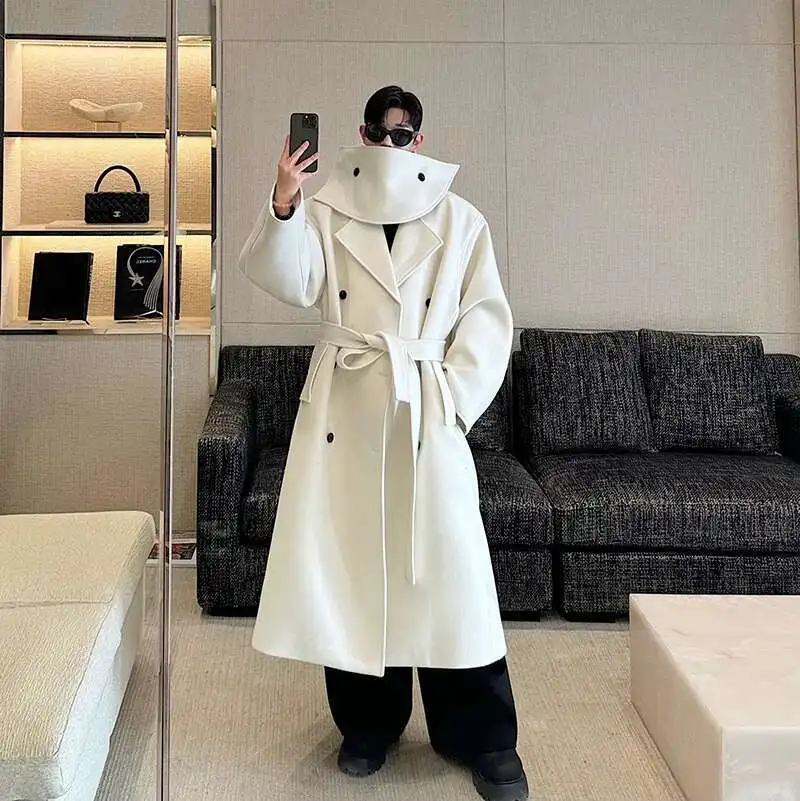
An insulated wool overcoat serves as a versatile cornerstone of a winter wardrobe, adaptable to virtually any occasion with the right styling approach. Mastering these combinations helps maximize the value of your investment by extending its utility across various settings.
Business and Formal Attire
For professional environments, your overcoat should complement rather than overpower your business attire:
- Pair a charcoal or navy insulated overcoat with matching or complementary suit colors
- Ensure your coat extends beyond your suit jacket by at least 2-3 inches
- Select subtle patterns like herringbone or solid colors for maximum versatility
- Coordinate accessories by matching leather gloves to your dress shoes
- Consider a cashmere scarf in a complementary tone for added refinement
The perfect winter coat length for business wear typically reaches just above the knee, providing warmth while maintaining professional appearance.
Smart Casual Combinations
Insulated wool overcoats effortlessly elevate casual attire to create polished yet relaxed ensembles:
- Layer over a merino turtleneck sweater and wool trousers for sophisticated weekend wear
- Combine with dark denim jeans and Chelsea boots for versatile urban styling
- Add texture through accessories like knit scarves and leather gloves
- Consider unexpected color pairings—camel overcoats complement burgundy sweaters beautifully
- Experiment with layered pieces like vests or lightweight down jackets underneath
Weekend Casual Looks
Even in casual settings, an insulated wool overcoat adds refinement while maintaining practical warmth:
- Pair with jeans, sneakers, and a casual sweater for elevated weekend comfort
- Layer over a hoodie for a contemporary high-low fashion statement
- Experiment with colorful accessories to add personality to neutral coat colors
- Consider more casual overcoat styles like duffle coats or relaxed fit options for purely casual settings
Color Coordination Principles
Understanding color relationships helps create harmonious overcoat outfits:
- Navy overcoats: Exceptionally versatile, pairs well with most colors including gray, burgundy, and forest green
- Charcoal overcoats: Perfect with blues, whites, and black; adds sophistication to casual pieces
- Camel overcoats: Creates striking contrast with navy, black, and dark greens; adds warmth to winter palettes
- Burgundy overcoats: Pairs beautifully with navy, gray, and camel for distinctive winter combinations
When selecting between short vs. long coats, consider not only practical warmth but how each length complements your body proportions and typical attire. Taller individuals often benefit from longer coats that balance their height, while shorter frames may find knee-length or mid-thigh options more flattering.
Care and Longevity: Maintaining Your Investment
Proper maintenance of your insulated wool overcoat significantly extends its lifespan and preserves its appearance, ensuring your investment provides maximum value over many winters.
Routine Wool Care
Daily Maintenance:
– Brush your coat with a soft clothes brush after each wear to remove surface dirt and restore the nap
– Allow 24 hours of rest between wearings to let moisture evaporate and wool fibers recover
– Hang on a sturdy, broad-shouldered wooden hanger that supports the coat’s shape
– Address spills immediately by blotting (never rubbing) with a clean, dry cloth
Spot Cleaning:
– For minor stains, use a damp cloth with minimal cold water
– For persistent stains, use specialized wool detergent diluted with cold water
– Always test cleaning solutions on an inconspicuous area first
– Allow spot-cleaned areas to air dry completely away from direct heat
Professional Cleaning Considerations
Quality insulated wool overcoats should be professionally cleaned only when necessary—typically once at the end of each winter season. Excessive cleaning can degrade wool fibers and damage insulation. When selecting a dry cleaner:
- Choose specialists experienced with premium wool garments
- Specify that the coat contains insulation that requires appropriate handling
- Request preservation of the coat’s natural oils and finish
- Ensure all buttons are secured and pockets emptied before cleaning
Off-Season Storage
Proper storage during warmer months prevents damage from moths, mildew, and misshaping:
- Clean the coat before storage to remove any food particles or body oils
- Use breathable garment bags rather than plastic, which can trap moisture
- Add cedar blocks or lavender sachets as natural moth deterrents
- Store in a cool, dry location away from direct sunlight
- Avoid overcrowding in closets, which can cause crushing and permanent creasing
Addressing Common Issues
Pilling: Remove pills with a specialized fabric shaver designed for wool, using gentle strokes in one direction.
Moth Damage: For minor holes, seek professional reweaving services; for insulation damage, consult specialty tailors familiar with insulated garments.
Water Exposure: If your coat becomes wet, hang it to dry at room temperature away from direct heat sources, then brush gently once completely dry to restore the nap.
Button Security: Check button attachment regularly and reinforce loose buttons promptly with matching thread and backing reinforcement.
With proper care, a quality insulated wool overcoat can remain a functional and stylish wardrobe staple for decades, making it one of the most valuable investments in a well-considered wardrobe.
Frequently Asked Questions About Insulated Wool Overcoats
How warm is an insulated wool overcoat compared to a puffer jacket?
Insulated wool overcoats and puffer jackets offer different types of warmth. While puffer jackets typically provide more immediate insulation in extremely cold conditions, wool overcoats offer better temperature regulation across varying conditions. Quality insulated wool overcoats with proper layering can be comfortable in temperatures as low as 10-15°F, while maintaining breathability that prevents overheating when moving between outdoor and indoor environments. The wool exterior also provides superior wind resistance compared to many synthetic materials used in puffer jackets.
Can wool overcoats withstand rain and snow?
Traditional wool naturally repels light moisture due to its water-resistant lanolin coating and scale-like fiber structure. Quality wool can absorb up to 30% of its weight in moisture before feeling wet. However, prolonged exposure to heavy rain or wet snow will eventually saturate the fabric. Many modern insulated wool overcoats feature water-resistant treatments that enhance this natural protection without compromising breathability. For significant precipitation, consider an overcoat with additional water-resistant treatments or carry a compact umbrella.
What’s the difference between an overcoat and a topcoat?
The primary difference lies in weight and intended temperature range. Overcoats are constructed from heavier wool (typically 18-30 ounces) and often feature insulation, making them suitable for genuine winter conditions. Topcoats use lighter wool (typically 13-18 ounces) with minimal insulation, designed for milder transitional weather in fall and spring. Overcoats generally extend to knee length, while topcoats typically reach mid-thigh, offering less coverage but increased mobility.
How many seasons can I expect from a quality wool overcoat?
With proper care, a high-quality insulated wool overcoat can last 10+ years of regular winter wear. Many premium overcoats become heirloom pieces, serving for decades with occasional repairs and maintenance. Factors affecting longevity include wool quality, construction methods, wearing frequency, and maintenance practices. Investing in proper cleaning, storage, and prompt minor repairs dramatically extends a coat’s serviceable life.
Is a heavier wool overcoat always warmer?
While weight often correlates with warmth, it’s not the only factor. Modern insulation technology allows relatively lightweight coats to provide exceptional warmth. More important than overall weight are the wool quality, weave density, insulation type, and construction details like wind barriers and sealed seams. A moderately weighted coat with quality insulation and thoughtful design features may outperform a heavier coat lacking these refinements.
How do I pack an insulated wool overcoat for travel?
When traveling with an insulated wool overcoat, wear it during transit when possible to avoid packing challenges. If packing is necessary, turn the coat inside-out, fold the shoulders together, and fold in thirds lengthwise before rolling to minimize creasing. Upon arrival, hang the coat immediately in the bathroom while showering—the steam helps release wrinkles. Alternatively, request pressing services at your accommodation. For business travelers, garment bags designed for coats provide the best protection during transit.

